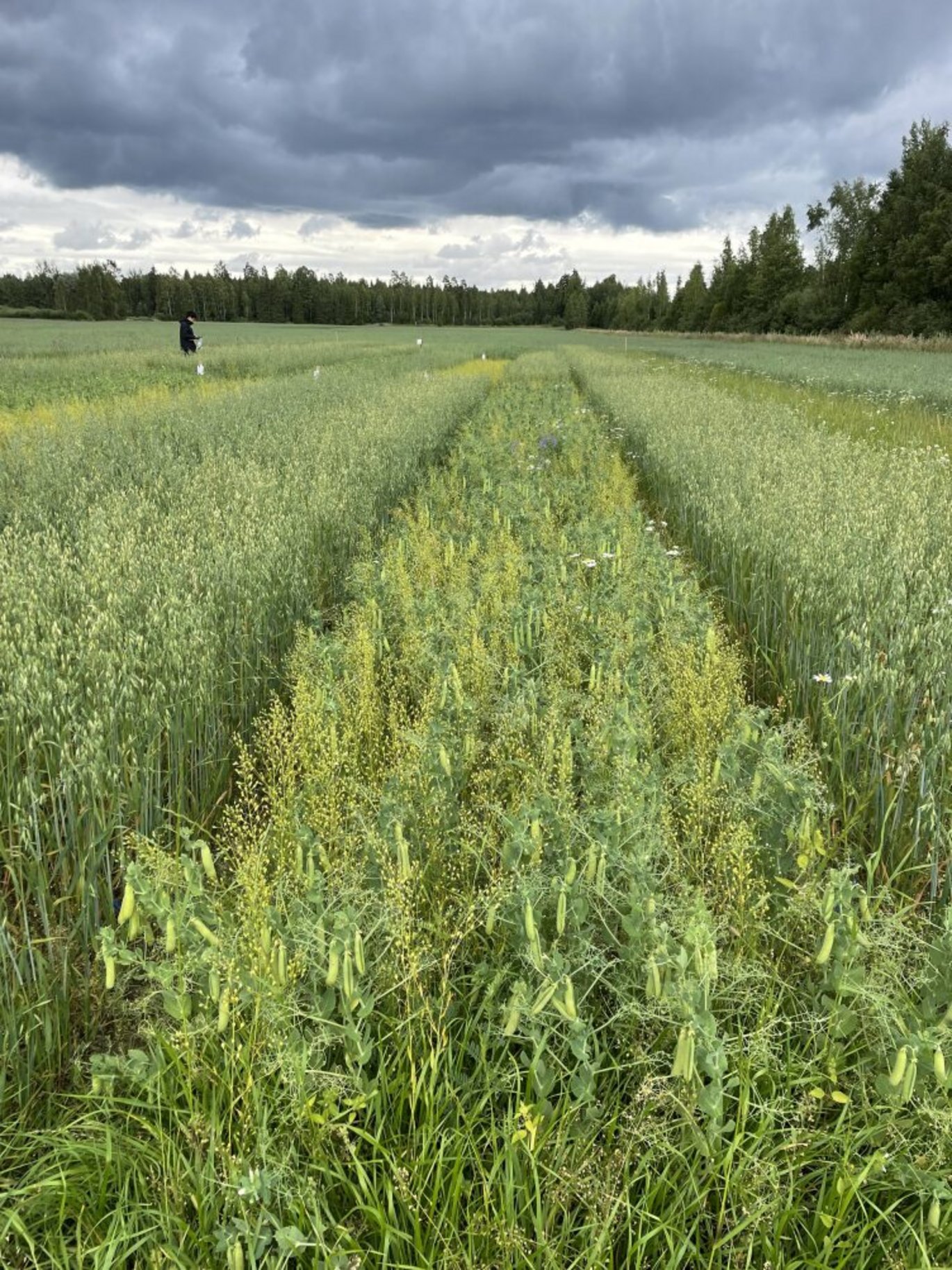Success of three-crop mixtures in Finnish organic cropping system
One challenge for organic production is to increase yields. Mixed cropping containing nitrogen fixing legumes as one component has the potential to provide a solution towards this aim. In general, mixed cropping results in more efficient land use.

Two field experiments were conducted at an organic farm in Hyvinkää in 2022 and 2023. Pea:oats:camelina mixtures with different mixing ratios (50:20:30 percent in 2022, 50:50:50 percent in 2023, and 33:33:33 percent in both years) were seeded in the plots in four replicates. The percentages are given relative to the sowing rates in pure component crops (100 percent). Plant growth was monitored with samples collected five times during the growing periods. At full maturity, the yield was harvested.
Mixed cropping did not affect the development rate of the component crops and the component crops of these mixtures reached full maturity almost at the same time. The Land Equivalent Ratio (LER) of both grain yield and biomass yield was generally higher in 33 percent and 50 percent crop mixtures in comparison to sole crops. Also, the relative yields of component crops were in general better than their sole counterparts. The 33 percent mixture increased the competitiveness of peas and oats over the two years, while slightly reducing the competitiveness of camelina. The 50 percent mixture increased the competitiveness of oats, but this occurred at the expense of pea and camelina. In 2023, a higher planting density resulted in a 50 percent mixture increased harvest index and had slightly higher yield compared to the 33 percent mixture. Additionally, nitrogen fixing pea in the mixture could provide nitrogen for oats during the growing season. However, it should be considered that both years were rather dry in the early season. Thus, it seemed that oats had better tolerance against water deficit at an early growth stage in comparison to other component crops. It also seems that oats dominates camelina in mixtures in growth and yield. This should be taken into account when designing the mixtures for practical cropping systems.
In general, there were very high pest pressure at seedling stage in both years. However, the crops tolerated the pests well. Hardly any diseases were observed. Furthermore, there did not seem to be any marked difference in pests and diseases between sole crops and mixed crops. The main problem especially in 2023 was weeds. In 2022, there were plenty of weeds at seedling stage, but the crops were very competitive against those. In 2023, especially the perennial weeds became challenging. Based on the results, using oats as a component crop in mixtures is beneficial in increasing the competition against weeds especially in case of pea and camelina.
Advantages of mixed crops over sole crops were related to land coverage, biodiversity and especially yield stability. Challenges are related to the markets and use of the yield and its processing as well as its sorting (if needed).
In conclusion, adopting mixed crops could provide one option to increase the land area based yields and enhance the competitiveness of organic agriculture as well as production possibilities of challenging minor crops, such as camelina.
To learn more about the DIVERSILIENCE project and its contributions to sustainable agriculture, please visit our website.
Chao Xiao, Department of Agricultural Sciences, University of Helsinki; chao.xiao@helsinki.fi
Pirjo Mäkelä, Department of Agricultural Sciences, University of Helsinki; pirjo.makela@helsinki.fi
Laura Alakukku, Department of Agricultural Sciences, University of Helsinki; laura.alakukku@helsinki.fi